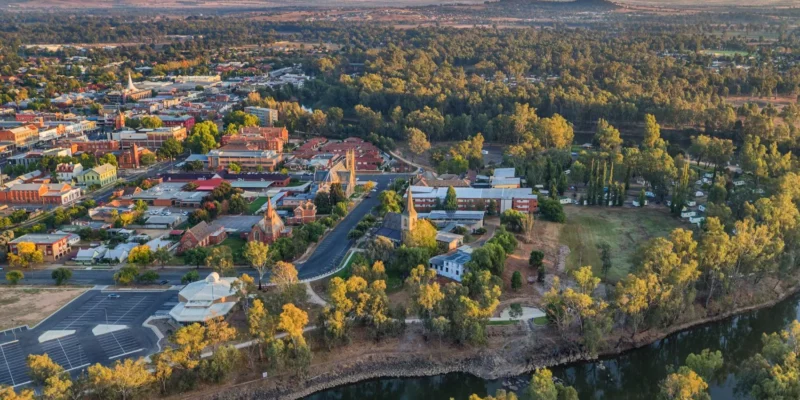How conveyancers can win from the changing size of Australian homes
Australia’s conveyancing sector stands to gain from a dramatic downshift in the size of homes, as apartment living gains traction nationwide.

IN recent years, Australia has been a global leader on house sizes, with the average local dwelling clocking in at 2,303 square feet, ahead of New Zealand (2,174 square feet) and the United States (2,164 square feet).
Experts attribute Australia’s keenness for big houses to the nation’s vast land availability and a desire to accommodate growing families.
But that looks to be changing as more Australians, including families, shift to live in apartments, a trend partly driven by fewer urban fringe housing estate releases across the country.
Amanda Farmer, a lawyer and the owner of Lawyers Chambers, a strata-focused legal practice in Sydney, said the rising popularity of apartment living was a positive for canny conveyancers.
“I think this is a huge opportunity for conveyancers right across the country,” Farmer said.
“Already we have around 10 per cent of Australians living in apartments and that number is expected to grow exponentially.
“Our cities in most desirable urban areas can no longer grow out, they must grow up so strata and community title is going to become more common.”
According to the strata law expert, “conveyancers who have knowledge and expertise in this area will be able to differentiate themselves and really be able to build a strong practice around advising on these contracts”.
Conveyancers who understood strata-related fundamentals would have an edge, she said, pointing to “at its most basic level being able to identify that a property is in a strata plan”.
“I don’t say that tongue in cheek,” she said. “This is something that when I educate conveyancers I focus on because you can have properties that don’t look like strata, but when you dig a bit deeper they are strata title.”
“I’m talking about duplexes, town houses, villas and often very small strata plans that are two lots, three lots, four lots,” Farmer added.
“The purchaser may not recognise them as strata and that’s not usually their fault – the real estate agent isn’t pointing that out to them.”
In the case of small strata plans, she said conveyancers were well placed to warn clients of common issues that could arise like difficulties resolving issues involving equal voting rights.
In Farmer’s view, some of the biggest strata issues emerged in the smallest buildings.
“If it is a small strata plan like a two, three or four lot there are some unique frustrations with those buildings that conveyancers would do well to advise their clients of,” she said.
“When you’ve got two people who have equal voting rights, for example, and one wants their roof fixed and the other doesn’t want to contribute you’re going to have a problem.”
In such instances, conveyancers with strata expertise stood out from the crowd, Farmer said, especially given the duty of a real estate agent to the vendor in a property transaction.
For instance, she posed a hypothetical situation in which a real estate agent told a potential duplex buyer that “’no there’s no body corporate you don’t have to worry’”.
If the buyer then goes to a conveyancer and “because they’re educated in this area they say ‘this is two lot strata plan you each have equal voting rights please be aware that this could be pain-point in the future’, then I’m going to say ‘thank you very much conveyancer’”.
The stakes, if buyers messed up on strata, were high, she warned.
As a lawyer in the area, Farmer said she had often “picked up the pieces” for clients involved in disputes , on “expensive repair work” on a small strata lot like a roof or a bathroom.
“You’re putting your hand in your pocket for sometimes tens of thousands of dollars to fix something that only your neighbour enjoys, that’s the nature of strata.
“It’s different when you’re in a high-rise multi-storey development and everybody is sharing that cost a bit more widely and you going into it realising these things.”
While more Australians are considering apartment living, it is only a recent phenomenon.
A 2024 Wollongong University study of more than 580,000 homes found that a residence designed in 2022 had a 7.6 per cent larger floor area than a home designed in 2018, with new homes in Victoria and NSW having the largest floor areas.
Tasmania had the smallest.
According to John McGrath, founder of McGrath Estate Agents, the fall in sizes over the past couple of years was driven largely by industry supply constraints and softer development rules.
McGrath, in a February property note, pointed to plans in NSW to allow terraces, townhouses, duplexes and small apartment blocks in more areas zoned residential.
Meanwhile, in Victoria, there’s the promotion of accelerated and ready-made approvals for mid-rise apartment blocks near some major centres and railway stations, he said.
“In line with the same trend, Australia’s suburbs are increasingly reaching for the skies, with more apartment towers being built to accommodate population growth and provide affordable options for home ownership,” the property expert said.




